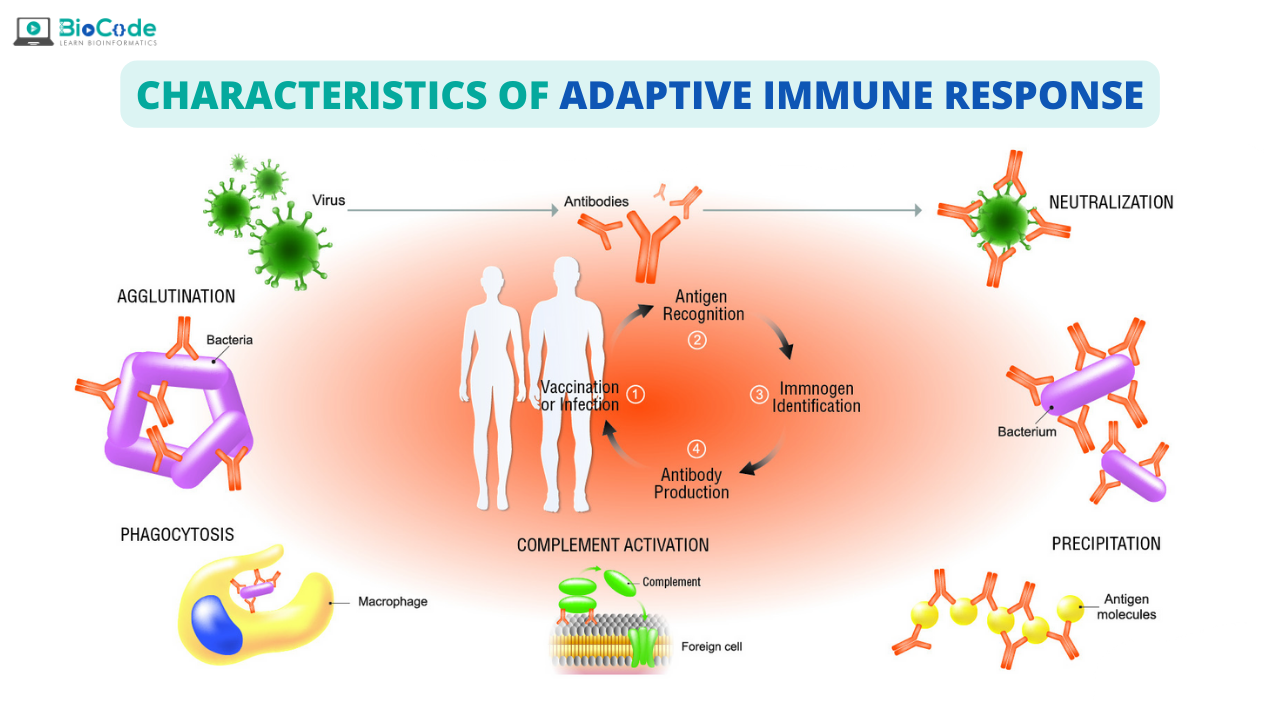Properties Of Adaptive Immune Responses: Specificity and Diversity
Specificity is the ability to distinguish between many different antigens. It implies that the total collection of lymphocyte specificities, sometimes called the lymphocyte repertoire, is extremely diverse. The clonal selection hypothesis, formulated in the 1950s, predicted that clones of lymphocytes specific for different antigens develop before an encounter with these antigens. And each antigen elicits an immune response by selecting and activating the lymphocytes of a specific clone. The effectiveness of immune responses is attributable to several features of adaptive immunity. These includes the marked expansion of the pool of lymphocytes specific for any antigen upon exposure to that antigen, and selection mechanisms that preserve the most useful lymphocytes.
Clonal selection:
Mature lymphocytes with receptors for many antigens develop before encountering these antigens. A clone refers to a population of lymphocytes with identical antigen receptors and therefore specificities; all these cells are presumably derived from one precursor cell. Each antigen selects a preexisting clone of specific lymphocytes and stimulates the proliferation and differentiation of that clone. Clonal selection also is true for extracellular soluble and intracellular antigens as well as surface molecules of microbes.
Memory:
The adaptive immune system mounts larger and more effective responses to repeated exposures to the same antigen. It keeps track of pathogens in the form of immunologic memory. The response to the first exposure to antigen is called the primary immune response. It is initiated by lymphocytes called naive lymphocytes that are seeing antigen for the first time. Subsequent encounters with the same antigen lead to responses called secondary immune responses. Which usually are more rapid, larger, and better able to eliminate the antigen than primary responses.
Primary and secondary immune responses:
Antigens induce the production of different antibodies (a reflection of specificity). The secondary response to antigen is more rapid and larger than the primary response (due to memory) and is different from the primary response to antigen (again reflecting specificity). Antibody levels decline with time after each immunization. The time after immunization may be 1 to 3 weeks for a primary response and 2 to 7 days for a secondary response, but the kinetics vary, depending on the antigen and the nature of immunization.
Other Features of Adaptive Immunity:
When lymphocytes are activated by antigens, they undergo proliferation. They generate many thousands of clonal progeny cells, all with the same antigen specificity. This process, called clonal expansion. All immune responses are self-limited and decline as the infection is eliminated. Immunological tolerance refers to the ability of the immune system to coexist with (tolerate) potentially antigenic self-molecules, cells, and tissues.

